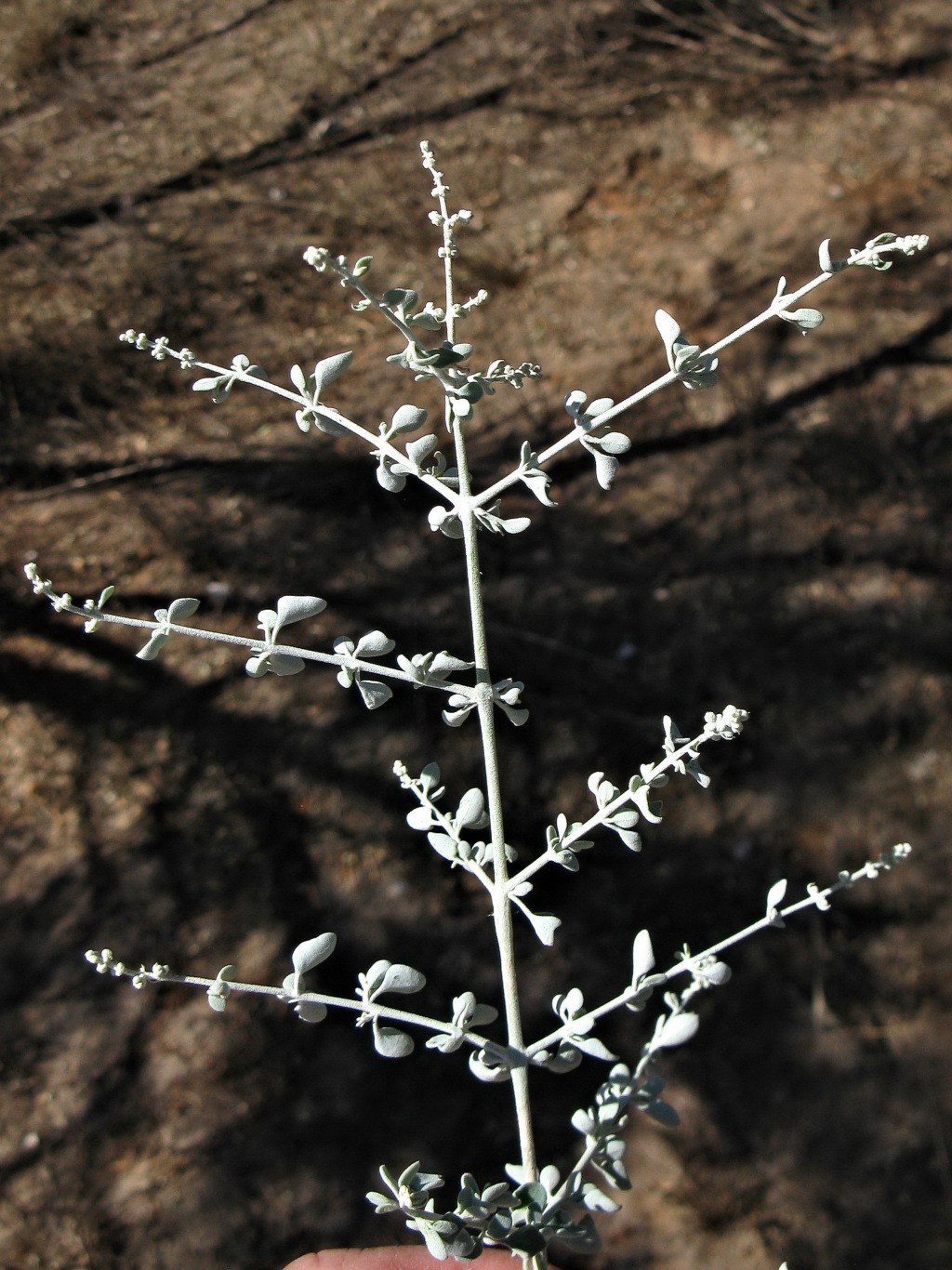Rhagodia spinescens
R.Br. Hedge Salt-bushDivaricately branched shrub to c. 1 m high, branches usually spine-tipped. Leaves opposite or subopposite, usually distinctly petiolate, ovate to obovate or deltoid, sometimes hastate, 5–20 mm long, 2–15 mm wide, mealy grey-green or whitish from a (usually dense) covering of vesicular hairs. Inflorescence a slender, rather sparse panicle or spike-like; perianth densely mealy on outer surface, tepals c. 1.5 mm long, becoming enlarged (to c. 2.5 mm long) with a thickened midrib, and spreading in fruit. Berry 3–4 mm diam., subtended by enlarged fruiting perianth; seed 1.5–2 mm diam., the surface prominently elongate-reticulate. Flowers mostly Jan.–Apr.
LoM, MuM, Wim, VVP, VRiv, MSB, RobP, MuF, GipP, OtP, Gold, NIS. Also WA, NT, SA, Qld, NSW. Widespread through north-western Victoria, usually on rather heavy, saline or subsaline soils at lake margins, in dune swales or on flats. Sometimes forming dense, hedge-like stands.
A variable species. Plants with triangular or hastate, densely white-mealy leaves (= Rhagodia deltophylla) and plants with small, ovate to obovate, glistening grey-green leaves both occur through the range of the species in Victoria. These variants appear distinct at their extremes but are linked by specimens of intermediate character.
Walsh, N.G. (1996). Chenopodiaceae. In: Walsh, N.G.; Entwisle, T.J., Flora of Victoria Vol. 3, Dicotyledons Winteraceae to Myrtaceae, pp. 129–199. Inkata Press, Melbourne.
 Spinning
Spinning



